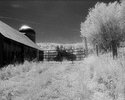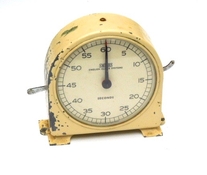Taylor Nankervis
Member
In terms of obtaining the very best results possible, 35mm Velvia 100 would not be the best choice, especially given its high cost, cramped contrast, and the consummate ease of errors many new/returning users make in exposing it. RVP 100 is hyper-saturated and requires a lot of experience to expose well — even done to its well-known edict, it can look quite gaudy compared to RVP50 — the proverbial (and very real!) Disneychrome look! It was commonly exposed to perfection in the era (now long gone) of Ilfochrome Classic printing. Much of my work before switching up to medium and large format was produced from Velvia 50 and 100 to Ilfochrome Classic, and the results of intensive experience (and huge cost) in the prints speak for themselves.
If you do go the 35mm way, restrict your photography when starting out to diffuse light where there are no deep shadows or bright areas; diffuse light penetrates shadows and subdues highlights and spectrals. Multispot metering, such as that afforded by handheld multispot/incident meters, provide the amount of control to critically analyse and balance the illumination across a scene — even extend the narrow dynamic range of RVP in ideal conditions. Exposing Velvia 50 or 100 in bright daylight is naff and wasteful; for that type of use, hook onto Provia 100. As you would be aware, RVP excels in early morning and evening light, gently accentuating colours, but how much it does so depends on how well you expose it! My use of RVP in forestry scenes almost always uses a polariser to modulate the effect — very easy in diffuse light, but a literal dog's breakfast in the harsh light of day. That's the sort of balls up mistake I made playing with Sensia 100 more than three decades-plus ago.
The Olympus OM4 is one of very few 35mm cameras I would recommended for Velvia, even so, the results you dream of probably will not come magically overnight, but with intensive practice: expose, take notes, develop, analyse on a (neutral/colour corrected-) lightbox and repeat. The OM4's hat trick is highlight and shadow balance — when used competently, it will easily ace even today's matrix/evaluative metering.
Note taking of exposure and scene is critical to evaluating and stepping your progress and planning improvements. None of the films are cheap, so keep in mind the cost of a single exposure every time you go out and plan to photograph, and make it count.
If they did, I would have put myself in the queue a long time ago!
That ship has well and truly sailed.
• Photo: Evening at the Taoist Tree, Lake Bonney, Barmera, South Australia. RVP50, Pentax 67, 90mm, multispot metered.
If you do go the 35mm way, restrict your photography when starting out to diffuse light where there are no deep shadows or bright areas; diffuse light penetrates shadows and subdues highlights and spectrals. Multispot metering, such as that afforded by handheld multispot/incident meters, provide the amount of control to critically analyse and balance the illumination across a scene — even extend the narrow dynamic range of RVP in ideal conditions. Exposing Velvia 50 or 100 in bright daylight is naff and wasteful; for that type of use, hook onto Provia 100. As you would be aware, RVP excels in early morning and evening light, gently accentuating colours, but how much it does so depends on how well you expose it! My use of RVP in forestry scenes almost always uses a polariser to modulate the effect — very easy in diffuse light, but a literal dog's breakfast in the harsh light of day. That's the sort of balls up mistake I made playing with Sensia 100 more than three decades-plus ago.
The Olympus OM4 is one of very few 35mm cameras I would recommended for Velvia, even so, the results you dream of probably will not come magically overnight, but with intensive practice: expose, take notes, develop, analyse on a (neutral/colour corrected-) lightbox and repeat. The OM4's hat trick is highlight and shadow balance — when used competently, it will easily ace even today's matrix/evaluative metering.
Note taking of exposure and scene is critical to evaluating and stepping your progress and planning improvements. None of the films are cheap, so keep in mind the cost of a single exposure every time you go out and plan to photograph, and make it count.
Ah fantastic thank you all very much for the input, I can't wait!
Question: does anyone still offer Cibachrome/Ilfochrome printing in the world?
If they did, I would have put myself in the queue a long time ago!
That ship has well and truly sailed.

• Photo: Evening at the Taoist Tree, Lake Bonney, Barmera, South Australia. RVP50, Pentax 67, 90mm, multispot metered.
Attachments
Last edited:






 hotrio.com+separate+bleach+fix+"c41"&oq=site
hotrio.com+separate+bleach+fix+"c41"&oq=site

 Other cameras that made podium mentions were the Canon T90, Olympus OM4, Canon EOS 1N, and Nikon F4.
Other cameras that made podium mentions were the Canon T90, Olympus OM4, Canon EOS 1N, and Nikon F4.